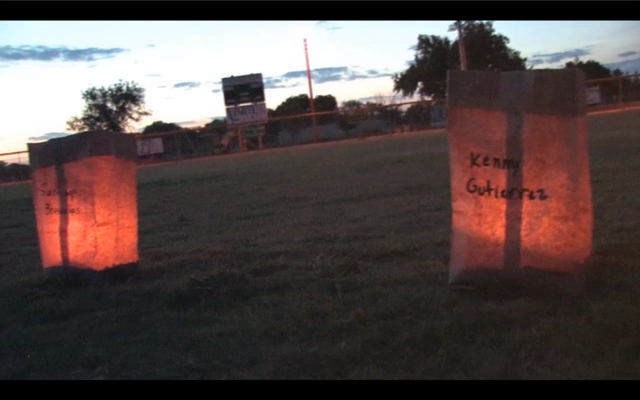Most histories of the Manhattan Project depict the 1945 Trinity Test as having taken place in the center of a vast, uninhabited plain, but there were ranchers and homesteaders who lived only miles away. Many of them reported having heard the explosion and, the next morning, saw ashen fallout settle over their land like a dusting of snow and even singeing their livestock. Although no official governmental survey of long-term health effects has been conducted on these so-called “downwinders” and their descendants, the Centers for Disease Control and Prevention investigated documents relating to the test and concluded that nearby residents were almost certainly exposed to harmful levels of radiation and may have experienced negative health effects, such as cancer, as a result. Santa Fe-based journalist Dennis J. Carroll, a former editor at the San Francisco Chronicle and a contributor to the New York Times and the Santa Fe New Mexican , is currently developing a documentary film about the Trinity downwinders and their struggle for both recognition and compensation. The Alibi spoke to him about their story. How did you get interested in the story of the Trinity downwinders? It goes back to when I was working in Iowa at a newspaper in Burlington. Nearby was a facility called the Iowa Army Ammunition Plant. After the bombs were dropped on Hiroshima and Nagasaki, this was the place where nuclear bombs were being assembled. … We started writing about it, and it turned out that people who had assembled weapons there were getting sick or dying. So we told the stories of those people in the local paper.One thing led to another and I moved to New Mexico, and I still had an interest in that project. So I did some more stories about workers [in the nuclear weapons field] and all their efforts to receive compensation. Which they did, in 2000.Then I stumbled on these folks in Tularosa, N.M., oddly enough, through Olivia Fermi, the granddaughter of Enrico Fermi, one of the key people in the Manhattan Project … She told me about a vigil that people were having near the Trinity site on the anniversary of the Trinity Test.So in April 2011, I convinced the New Mexican to let me write about these people who had been exposed to the Trinity test.Most people think about the first atomic bomb being exploded over Hiroshima, but it wasn’t. It was exploded over southern New Mexico. And a lot of people were made sick and died from it. Was there ever any official accounting for incidences of cancer among the population in that area? No. But there was a big study by the Centers for Disease Control, it’s called LAHDRA [Los Alamos Historic Document Retrieval and Assessment]. And a big part of that goes into Trinity. They found that there was very little written about Trinity, and they found that there may have been public health issues. I know that LAHDRA describes ash literally covering the ground near people’s homes after Trinity. Sure, and afterwards [the scientists] found radiation 10,000 times what would be allowed today. And nobody was warned about it because it was a secret.In a lot of ways, Trinity was rushed. They wanted Truman to have the results at Potsdam when he met Stalin that year. … And then even years later, when they found out about the long-term effects of radiation, the government never came back to check on the welfare of these people.There’s something called the Radiation Exposure Compensation Act of 1990. … It compensated the “downwinders,” the people living downwind from the Nevada Test Site and the people in the Pacific islands who were near those sites, and uranium miners and all these folks. … They would be compensated for their exposure and have medical benefits paid.But the Trinity downwinders weren’t included in that. Why not? That’s one of the questions we want to answer [in the film]. We have tape of Tom Udall and former Senator Bingaman talking about it. But part of it is that the people didn’t advocate for themselves. They didn’t file suit like the downwinders in Nevada.That’s part of it, and it’s never gotten the attention. But now, Representative Lujan and Udall have signed on to legislation that would include these downwinders in the Tularosa Basin. But it never goes anywhere. How is the film coming? We are trying to raise some funds right now.We can hopefully set something in motion that will get people’s attention.










